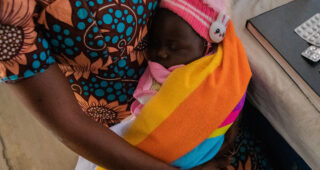Technical Brief on Paediatric HIV Case-Finding
Overview
Despite global progress in HIV treatment for children, the gap between adult and paediatric treatment coverage continues to widen. This gap is driven primarily by barriers to HIV diagnosis in children, but in the past decade those barriers have shifted. At the start of the epidemic, the lack of access to virologic testing for HIV-exposed infants was identified as a major hurdle to initiating children on treatment. A huge global undertaking supported by funders, implementers, and industry, has brought early infant diagnosis (EID) to most HIV-exposed infants whose mothers are enrolled in programmes to prevent HIV vertical transmission across 21 sub-Saharan Africa Global Plan countries. However, as the quality and efficacy of those programmes has improved, rates of vertical transmission have fallen and so too has the EID testing positivity. There remains a need still to increase access and functional reliability of EID testing, strengthen follow-up of mother-infant pairs, and services for HIV-exposed infants; however, this technical brief focuses primarily on how programmes can identify those children who may have missed out on EID testing, who were never tested after breastfeeding or whose mothers were not enrolled in care.
Scaling-up HIV case-finding efforts for children presents several challenges, including limited access to testing services, lack of provider preparedness to offer testing to children, stigma and discrimination, policy barriers related to age of consent, and inadequate health systems. The aim of this technical brief is to offer countries a guide to address these challenges and enhance HIV case-finding for children to improve testing coverage for children at risk for HIV.
The specific objectives are twofold:
- To describe the current challenges to scaling-up HIV testing among children (<15 years)
- To provide a set of priority actions and context-specific strategies to accelerate HIV case identification among children
This technical brief does not present new recommendations – rather it draws from existing guidance and best practices to serve as a resource for policy makers, implementing partners at national, regional, and global levels, community organizations, and financing and funding decision makers. The goal is to close the HIV service gaps between adults and children across the continuum of care by accelerating progress towards reaching the first of the UNAIDS 95-95-95 targets to end the HIV epidemic – that 95% of those living with HIV within all age groups know their HIV status by 2025.
A set of 10 priority actions has been identified and described in this brief, including setting appropriate paediatric testing targets, allocating resources efficiently, developing strategies for rapid catch-up and sustainable responses, tailoring testing interventions closely to the country context, expanding research into innovative approaches such as assisted HIV self-testing for children, addressing systemic inequalities and policy barriers, leveraging community-led responses, improving data-driven programming, and looking beyond infants and young children to include a focus on school-aged children (5-9 years) and younger adolescents (10-14 years). Additional resources are available regarding HIV case identification among older adolescents (15-19 years) (1,2).
Virtually all paediatric HIV infections are preventable, and no child should develop AIDS due to a lack of access to testing and treatment. On February 1, 2023, representatives of 12 African nations, who joined the newly formed Global Alliance to End AIDS in Children, met in Tanzania to sign the Dar es Salaam Declaration for Action to End AIDS in Children by 2030. The Declaration affirms a commitment to ending paediatric AIDS and specifically references enhanced case-finding as an urgent step to move from policy to action.
This technical brief was developed collaboratively by UNICEF, the U.S. Centers for Disease Control and Prevention (CDC) and the Elizabeth Glaser Pediatric AIDS Foundation (EGPAF), in consultation with several technical partners, including the World Health Organization (WHO) and the United Nations Programme on AIDS (UNAIDS). Learn more.
CDC, UNICEF, EGPAF
Global
Pediatric HIV Diagnosis, Care & Treatment



